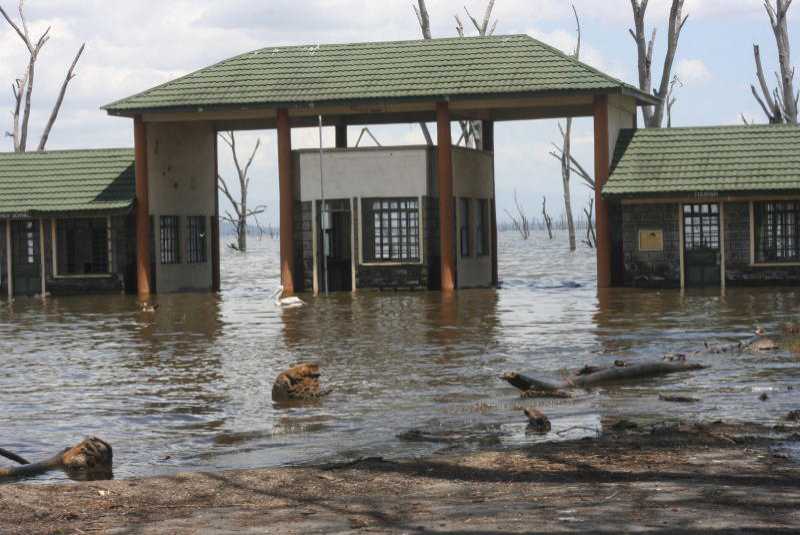
The Lake Nakuru which is famous for the pink cover of flamingoes has increased from about 23 to 33 per cent and the flooding water has now encroached on private land beyond the park boundaries, a Kenya Wildlife Service (KWS) research scientist has confirmed.
Joseph Edeba the senior researcher said in the last decade the spreading out of the lake has been out of the ordinary and various research scientists attribute the trajectory occurrence and trend to climate change.
He said unlike in the past when rainfall seasons adhered to a certain pattern, it has now been raining in the Rift Valley and most parts of the country consistently since last year June hence, the past known patterns of long rainfall being followed by a drought and short rains towards the end were totally upset.
He rubbished the popular claims that the flooding of the lake was due to rising water tables caused by seismic or underground movements, which have a frequent occurrences in the Rift Valley, and especially Nakuru County.
He noted: “If the seismic movements were true then Lake Victoria and the Seven Forks which are outside the Rift Valley should not be experiencing flooding and expansion occurrences.”
He said the lake area increased from about 43 square kilometres in 2010 to 62 square kilometres in 2020, adding, the park has an area of 188 square kilometres and in some areas, it has gone beyond the park boundaries and flooded the nearby Mwariki estate.
He said that the county has formed a High Water Taskforce to deal with the un-preceded expansion of the lake and prevent any further settlements closer to areas it’s likely to reclaim in the future.
The downside of the wild expansion of the Lake has, unfortunately, been the disappearance of the familiar pink cover because the water has become alkaline and hence the reduction of algae which forms the feed of the flamingoes.










